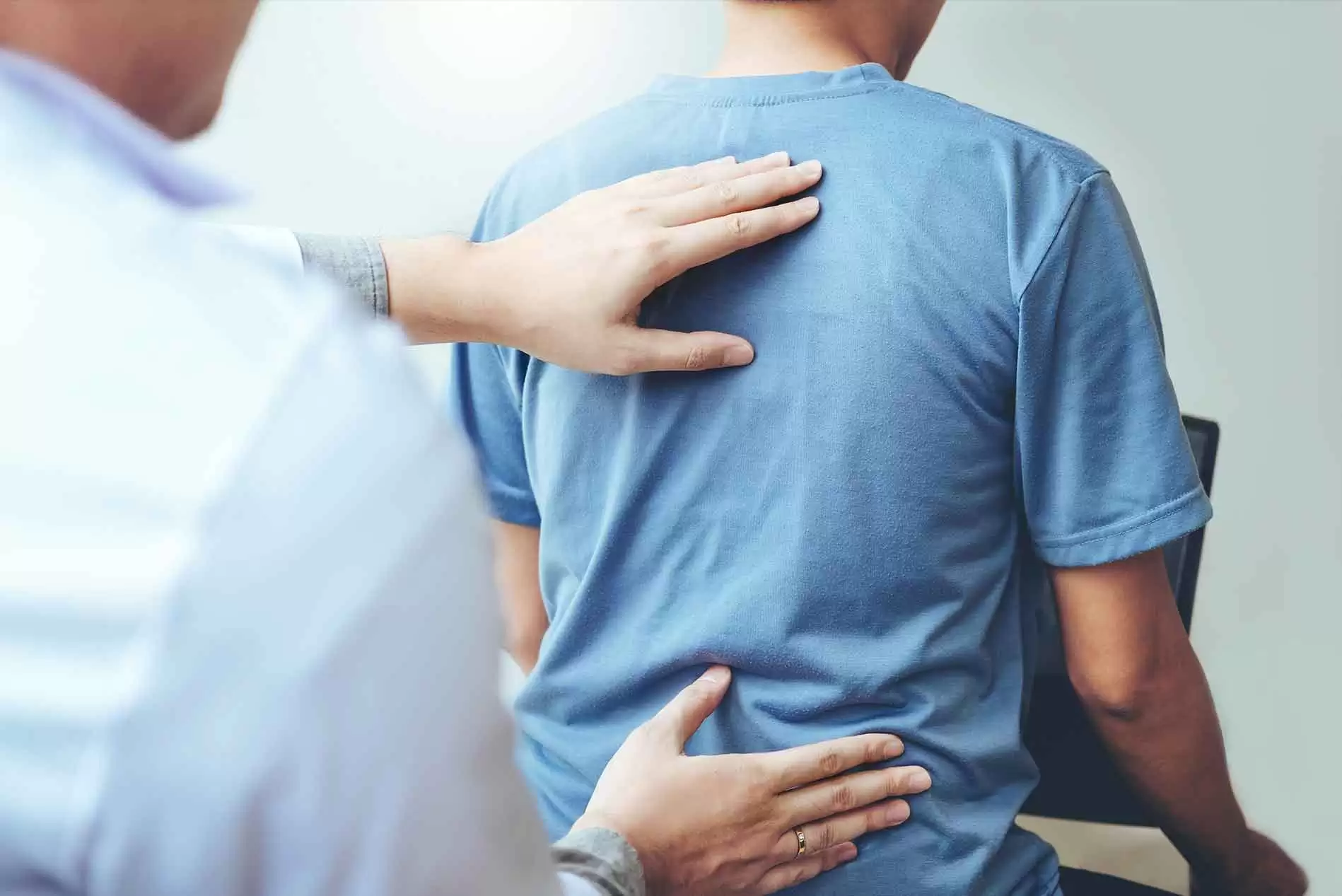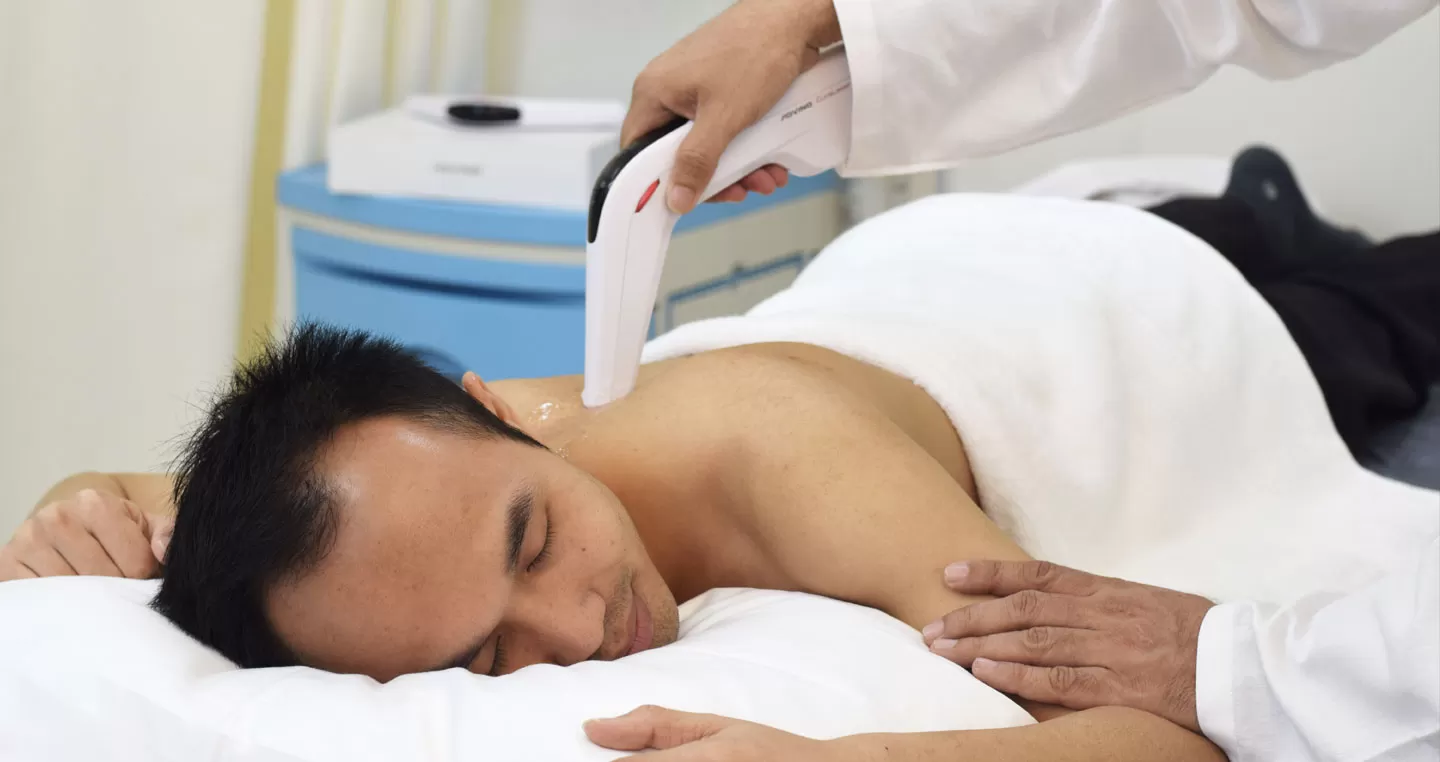
UPPER BACK PAIN
Advino Curalaser is best machine for physiotherapy and rehabilitation to treat chronic lower and upper back pain to treat your all the problems related to back pain. Improve your back health with this portable laser machine
The thoracic spine also referred to as the upper back or middle back is designed for stability to anchor the rib cage and protect vital internal organs within the chest. Compared to the neck (cervical spine) and lower back (lumbar spine), the upper back is remarkably resistant to injury and pain. When upper back pain does occur, it is typically due to long-term poor posture or an injury that overpowers the thoracic spine’s sturdiness. In addition to the thoracic spine and shoulder blades, there are numerous nerves, muscles, tendons, and ligaments in the upper back. Any of these structures can become irritated or inflamed in response to a variety of different factors and conditions, such as poor posture, overuse, trauma, arthritis, and bone cancer. However, most upper back pain causes involve muscle irritation or joint problems.
Though it is less common than lower back pain or neck pain, a study posted to Occupational Medicine indicated that 1 in 10 men and 1 in 5 women might suffer from upper back pain.
X-ray. These images show the alignment of your bones and whether you have arthritis or broken bones. These images alone won’t show problems with your spinal cord, muscles, nerves or disks.
MRI or CT scans. These scans generate images that can reveal herniated disks or problems with bones, muscles, tissue, tendons, nerves, ligaments and blood vessels.
Blood tests. These can help determine whether you have an infection or other condition that might be causing your pain.
Bone scan. Bone density test, also known as a DXA (or DEXA) test, it measures your bone mineral density to determine whether you have or are at risk for osteoporosis.
Nerve studies. Electromyography (EMG) measures the electrical impulses produced by the nerves and the responses of your muscles. This test can confirm nerve compression caused by herniated disks or narrowing of your spinal canal (spinal stenosis).

Most back pain gets better within a month of home treatment. However, everyone is different, and back pain is a complex condition. For many, the pain doesn't go away for a few months, but only a few have persistent, severe pain.
A physical therapist can teach you exercises to increase your flexibility, strengthen your back and abdominal muscles, and improve your posture. Regular use of these techniques can help keep pain from returning. Physical therapists will also provide education about how to modify your movements during an episode of back pain to avoid flaring pain symptoms while continuing to be active.

CuraLaser relieves the spasm and so is the pain right from the 1st treatment session.
Advino CuraLaser is best upper back pain relief physiotherapy machine and also cures other pains as well. Visit our YouTube channel for a better understanding on how to get the best results with our pain relief laser machine. Please contact our customer care for more help.
References :
https://www.mayoclinic.org/diseases-conditions/back-pain/symptoms-causes/syc-20369906
https://www.spine-health.com/conditions/upper-back-pain/early-treatments-upper-back-pain
https://www.spineuniverse.com/conditions/upper-back-pain
https://www.uofmhealth.org/health-library/aba5320
https://www.healthgrades.com/right-care/back-pain/upper-back-pain
https://www.bupa.co.uk/health-information/back-care/upper-back-pain
https://www.hopkinsmedicine.org/health/conditions-and-diseases/back-pain